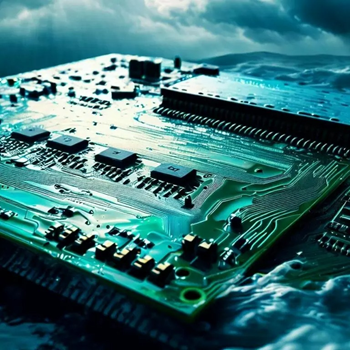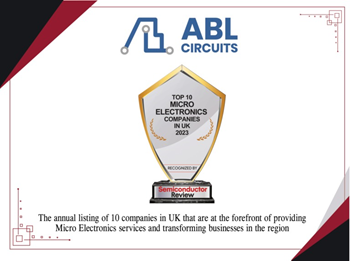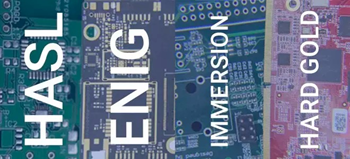PCBs for Harsh Environments: A Comprehensive Guide by ABL Circuits
Depending on the industry they’re used in, PCBs are frequently exposed to harsh environments which can push them to their limits. Including fluctuating temperatures, vibrations and moisture, there are a variety of conditions that can affect the performance and longevity of a PCB. That means, for PCBs that are being manufactured for use in harsh conditions, several considerations have to be made to ensure that the quality and performance remain high. Here at ABL Circuits, we’re leading experts in manufacturing PCBs for clients that operate in harsh environments and demanding industries, including the aerospace, energy and military and defence sectors. In this post, we’re going to use our expertise to explain everything you need to know about manufacturing PCBs for harsh environments. Understanding harsh environments Electronics don’t always perform well in harsh conditions, but due to the nature in which they’re used, there’s often no choice but to expose them to them, often for prolonged periods. Harsh environments include: • Extreme temperatures – Extreme heat can cause overheating, degradation or even lead to components melting. Extreme cold can lead to joints becoming brittle, freezing, or failing. • Moisture and humidity – Moisture and electronics never mesh well and can lead to short-circuiting and corrosion. • Dust and other particles – Dust and other particles can gather on PCBs, which can cause overheating and lead to short-circuiting. • Vibrations and stresses – Vibrations, stresses and shocks can loosen components and damage joints, which can cause circuit failure. • Chemical agents – Chemicals, solvents, gases and other substances can quickly corrode components and PCBs. • Radiation – Electromagnetic radiation can hinder a PCB’s performance. • Electrical overload – Power surges can cause excessive electrical current, voltage spikes and transient events that can cause circuit failure. Harsh environments in key industries Certain industries that utilise PCBs operate them in conditions that are far more extreme than others. Below are some examples of industries that put the durability and longevity of PCBs to the test. Discuss the industries that ABL Circuits serves and how each of them might encounter harsh environments. Aerospace The aerospace industry exposes PCBs to various unique challenges, including: • Changes in temperature, particularly those at high altitudes, and temperature that changes rapidly. PCBs must be designed to withstand these conditions and prevent thermal stress that can lead to damaged joints and loose components. • Vibrations are common on aircraft, such as during periods of turbulence and during takeoff and landing. To combat this, stiffeners are used to ensure PCBs have more resistance to vibrations. • When flying at high altitudes, aircraft are exposed to ionising radiation, which can lead to components on PCBs losing performance or degrading. Radiation-hardened components are used to prevent radiation from having this effect. • Reliability is critical in the aerospace industry, as a fault can lead to catastrophic failure. PCBs used in aerospace are designed with backup systems in place to ensure optimum reliability. • Size and weight must be kept to a minimum for PCBs use on aircraft, so space-saving miniaturisation techniques are used, such as multi-layer boards and surface mount components. Automation The automation industry provides plenty of challenges of its own: • Electrical noise, such as that produced by high-power motors, can cause interference with PCBs. PCBs in automation are designed to withstand this with signal shielding, EMI filtering and other techniques. • Industrial environments harbour humidity, chemicals and harmful particles. As a result, particular care is taken to protect PCBs from exposure, for example by using more robust enclosures. • Durability is key in automation as systems are usually required to operate for many hours a day, or sometimes even continuously. PCBs for manufacturing undertake rigorous testing to ensure enhanced durability. Automotive A fast-paced environment such as the automotive industry asks a lot from PCBs: • Vehicles are exposed to a range of different temperatures, both from the environment and the heat generated by the engine. PCBs have to withstand a variety of temperatures. • Vibration and shock are major stressors on PCBs in vehicles caused by the engine, road conditions and driving styles. The effects of vibration can be prevented with stiffeners and mounts. • Electrical noise and electromagnetic interference caused by systems such as ignitions and motors can impact PCB performance. This can be prevented by using filters, shielding and grounding techniques. Energy The energy industry includes several individual sectors, including electricity, oil and gas. As a result, the challenges can be quite varied: • PCBs can be exposed to high voltages and currents, which requires specific trace widths, insulation distances and components that have the appropriate dielectric strength. • Energy production often involves intense heat, which PCBs may regularly be exposed to. To cope with high temperatures, PCBs are designed using thermally conductive materials and various techniques designed to help them manage heat. • The energy industry relies on the use of heavy, complex machinery. As a result, electrical noise and electromagnetic interference are generated. This means PCBs are designed with filters, ground planes and other shielding techniques to ensure reliability. Healthcare Working in the healthcare industry comes with plenty of challenges, including those related to PCBs: • Patient safety is the biggest concern, so it’s critical that PCBs are reliable and accurate and never dip in performance. As a result, durability and longevity are key. • The healthcare industry has numerous requirements regarding compliance that are specifically related to the operation of medical equipment and technology. All PCBs designed for use in the healthcare industry should always meet these strict and important standards. • PCBs that operate in busy healthcare environments may be exposed to chemicals, such as those related to sterilisation, which could lead to corrosion. As a result, PCBs should be designed to operate in conditions that use these chemicals regularly. • The healthcare industry suffers from a lack of funding, so it’s crucial that PCBs in medical equipment are reliable and have strong longevity. Military and defence Just like those who work in the military and defence industry, PCBs also face unique challenges: • Long exposure to a variety of harsh environments and conditions, including extremes in temperatures, varying levels of humidity, exposure to dust and other particle matter, chemicals and more. • Vibration and shock, which can be experienced on military operations on land, sea and air. • Electromagnetic interference and radio frequency interference, such as those produced by sonar, radar and other communications equipment, can affect performance. PCBs used in the military and defence industry must be able to withstand electronic warfare and maintain integrity to protect data. • Reliability and longevity are crucial to ensure the safety and protection of those using equipment while on operations. • PCBs must be small and light while still maintaining power and efficiency, so techniques surrounding miniaturisation, for example multi-layer boards, should be utilised. Designing PCBs for harsh environments PCBs that are designed for use in harsh environments should be approached differently. There is no one-size-fits-all approach as harsh environments can be anything from fluctuating temperatures to exposure to radiation. When designing PCBs for extreme environments, there are several considerations to be aware of to ensure maximum performance, durability and longevity: • Selecting materials and components that can withstand harsh conditions, such as high glass transition temperature (Tg). • Copper weight (aka copper thickness) is important as it helps with the likes of temperature regulation and power distribution. • Conformal coating and encapsulation will protect the PCB from dust, moisture and other contaminants. • Reinforcements are needed to protect the PCB from shock, vibration and stress. • Shielding layers and grounding techniques will help with protection from EMI and EMC. ABL Circuits’ expertise in PCBs for harsh environments Here at ABL Circuits, we have extensive experience and expertise in the design and manufacture of PCBs used in harsh environments. As part of our quality work in the aerospace, automation, energy, healthcare and defence and military industries, we’ve worked with some of the biggest names around. including AirBus and the UK government, our PCBs are used in many of the world’s harshest environments, and we pride ourselves in designing and manufacturing high-quality, high-performing PCBs that have superb durability and longevity. Reach out for a bespoke quote today! At ABL Circuits we build durable PCBs that are meticulously and carefully designed and are rigorously tested to ensure maximum performance in any environment. Get a free trial today and enhance your product with ABL Circuits.Visit the ABL Circuits Ltd website for more information on PCBs for Harsh Environments: A Comprehensive Guide by ABL Circuits




